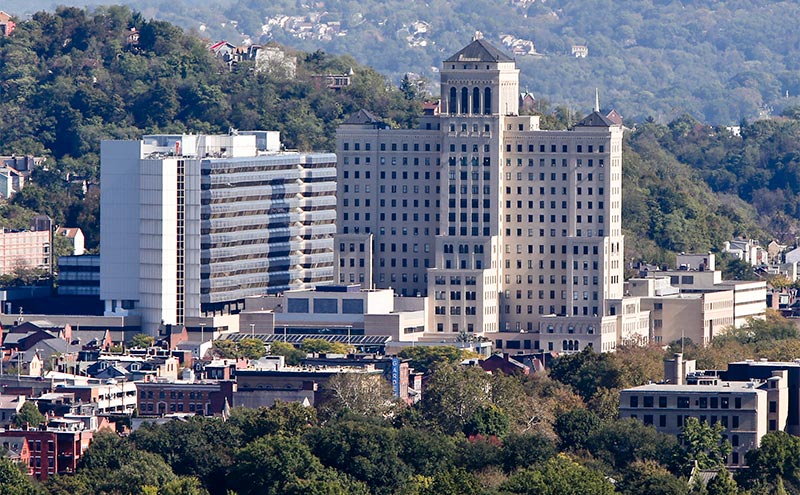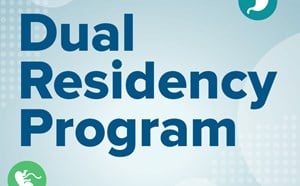
Reflections on the Closing of the Allegheny Dual Training Program
The following is a guest post by Dr. Amesh Adalja. Dr. Adalja is a graduate of the now closed EM/IM program at Allegheny General Hospital. This was originally published on the Tracking Zebra blog on December 7, 2016.
RIP, Combined IM/EM Residency that Molded My Career
Amesh Adalja, MD
During a recent emergency department (ED) shift at my hometown community hospital in which I do a couple of casual shifts a month, a cardiologist said to me “I have a question for you: why do you work in the ER.” It was probably a puzzling question to him given that he knows I am primarily an infectious disease and critical care physician and don't "need" to work in the ED. My reply, “it can be so much fun.” The reply was true but there is much more to the story than just fun.
When someone decides they want to be a physician my experience is that they have some pull towards one of the specialties and/or subspecialties of medicine. So it was for me. Though in my case I was pulled in myriad directions that, in my mind and now easily seen in retrospect based on my career path, were obviously integrated. I knew immediately that I wanted to be an infectious disease physician dealing with the puzzles, the problem solving, the societal import, and the national security implications of these endlessly fascinating infections. But I loved the action of the ED in which medicine was hyperacute, results were often immediate, and you never knew what you might see next – including the next pandemic, a novel emerging infectious disease, or the first hints of a bioterrorist attack. So it was natural that I would pursue a double residency in Internal Medicine (internal medicine is the gateway specialty to infectious disease) and Emergency Medicine (IM/EM).
But did such a career pathway even exist? I can vividly remember looking on the internet (dial-up) for such programs in the mid-1990s as a pre-medical student and seeing about 9 pop up. As I perused the list, I became ecstatic when I saw that one was in my hometown of Pittsburgh at Allegheny General Hospital (AGH). I noted that it took two residents per year and that it interviewed quite a number more than that. At that moment, I mentally committed and fixated on that residency as the goal I would achieve.
As I went through medical school and progressed through my rotations, my commitment to dual IM/EM training at AGH only grew as my classmates constantly changed which specialties they were interested in.
Once on a whim, I got in touch with a chief resident of the program years before I was even able to apply just to ask him about the program. Though I have never met him in person what he said to the precocious nagging medical student that I was at that time still echoes in my brain: “With this residency, you will be ready for anything.” That is exactly the type of doctor I wanted to be and though I may not have lived up to that aspiration, it is the ideal that I strove--and still strive--for. What this resident, who is now at a major medical center, was keying in on was the fact, as was put in an 1987 letter advocating dual training, that IM/EM dual-trained physicians are able to experience a “depth in pathophysiology,” acquire “an unusual breadth of medical knowledge,” and develop “a firm understanding of the natural history of disease.”
I eventually matched at AGH -- which I naturally ranked #1 -- and was graciously welcomed into the ranks of the residency that I had imagined myself entering for so long. I progressed through my 5 years of residency and through that time made lifetime friends and really learned to be a physician. My last year of residency I served, as all combined IM/EM residents do, as chief resident and had the ability to steer the program, interview prospective applicants, and ruffle feathers when I believed IM/EM residents were being undervalued.
A few months ago I heard that AGH has decided to close the combined residency and not take new residents. This news induced some sadness in me because that residency program is a core element of who I am as a physician. It was something you expected always to be there -- almost like one's elementary school. It is how I became a physician and spent a lot of my young adulthood. My co-residents (and those that came before and after me), who I believe to be an elite group of physicians, took a special interest in making sure each of us excelled because we were a unique group of hybrids almost on a special mission. As such, IM/EM residents were a special breed at AGH and, because we were there for five years, grew to know almost everyone in the hospital from the CEO – who utilized us for committees – to the mysterious night shift cafeteria worker whose eyes one would never meet (our own Boo Radley). When several IM/EM residents were rotating in the ICU together they were colloquially known as “a dream team” because of the heightened skills and knowledge that they were thought to possess. One resident was known as “Dead On Davis” because of her unrivalled ability to see a cryptic diagnosis before anyone else.
I cannot do the program the justice it deserves in this blog post but I am grateful for the opportunity it afforded me (and continues to afford me). I am reluctant to speculate on why the program suffered this fate but, if I were to venture a guess, I think that it was a combination of diminished interest among medical students coupled to lack of full commitment to and leadership for the program – something we often noted as we were constantly being balkanized between two departments without having a home of our own in the hospital -- in the financially beleaguered status of the sponsoring health system.
A future project of mine is to collate the names of all the graduates (and the current residents finishing the program) so that this program and the impact of these physicians – many who have excelled to a level unheard of from our counterparts from the categorical internal and emergency medicine programs (a fact borne out in two studies) -- who saw and pursued a synergy that others were unable to see will not be forgotten. I only hope the still existing IM/EM (and IM/EM/CCM) programs do not suffer the same fate.


